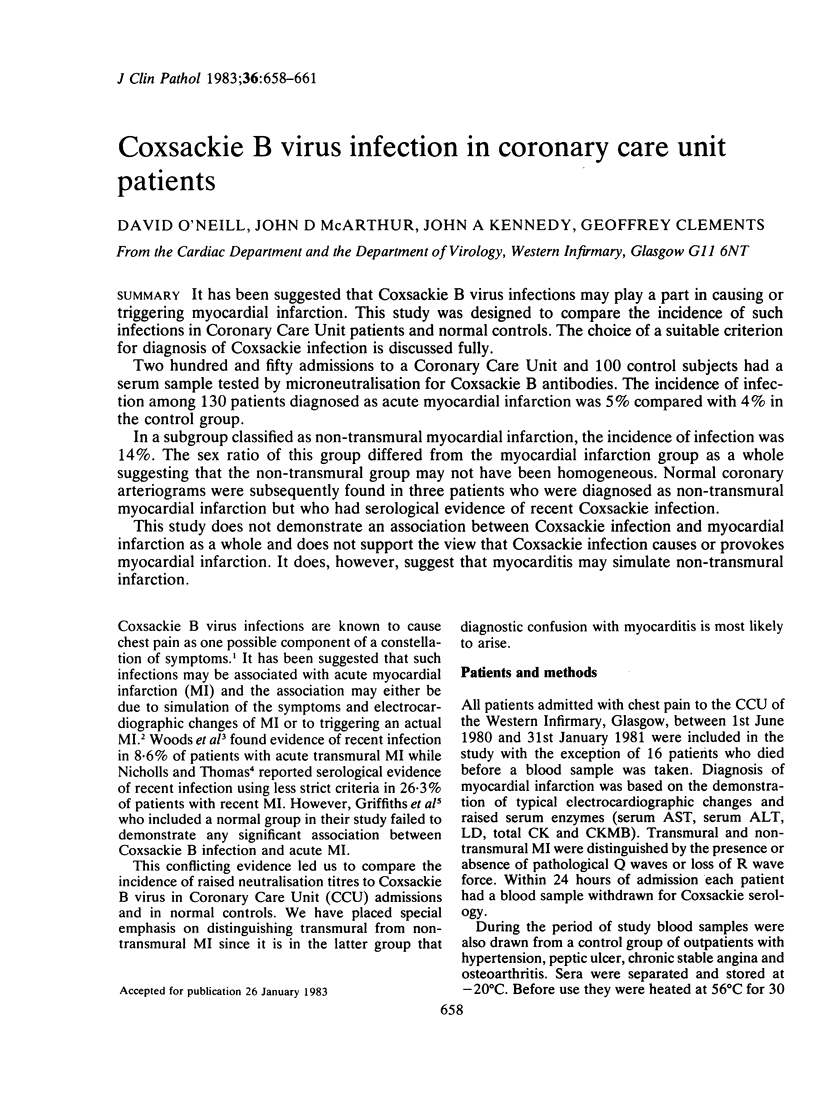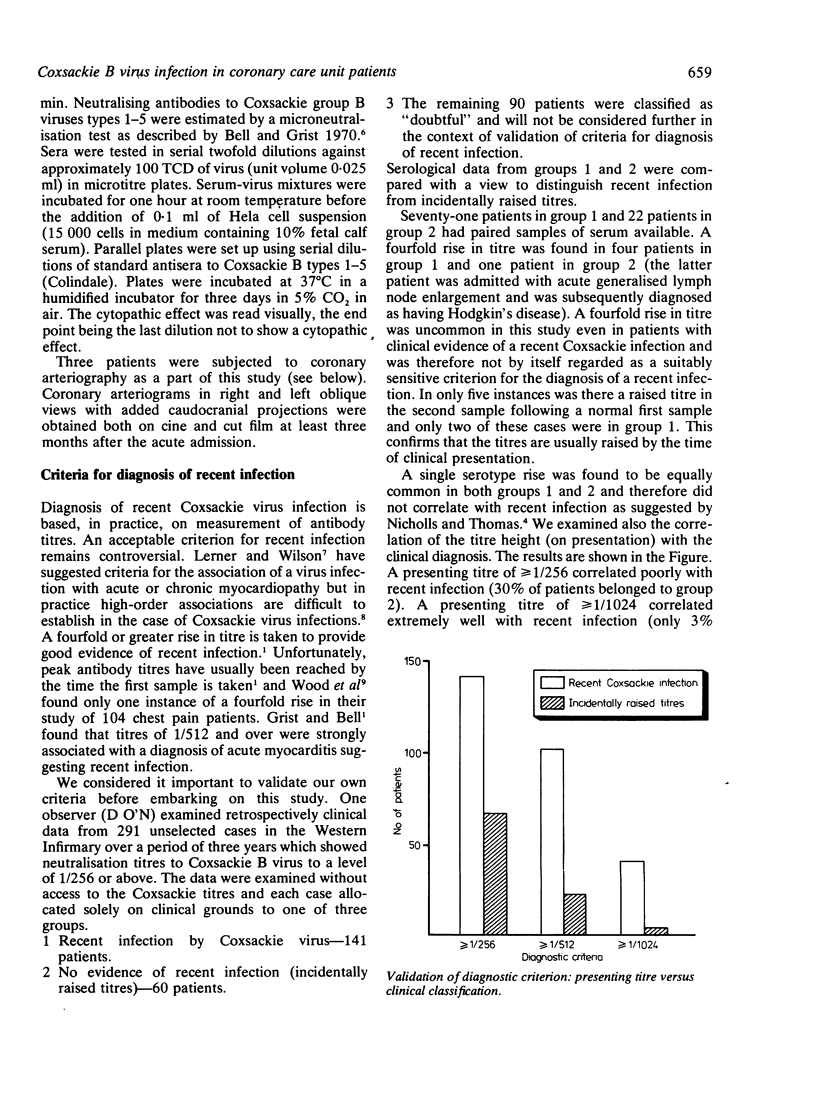Abstract
It has been suggested that Coxsackie B virus infections may play a part in causing or triggering myocardial infarction. This study was designed to compare the incidence of such infections in Coronary Care Unit patients and normal controls. The choice of a suitable criterion for diagnosis of Coxsackie infection is discussed fully. Two hundred and fifty admissions to a Coronary Care Unit and 100 control subjects had a serum sample tested by microneutralisation for Coxsackie B antibodies. The incidence of infection among 130 patients diagnosed as acute myocardial infarction was 5% compared with 4% in the control group. In a subgroup classified as non-transmural myocardial infarction, the incidence of infection was 14%. The sex ratio of this group differed from the myocardial infarction group as a whole suggesting that the non-transmural group may not have been homogeneous. Normal coronary arteriograms were subsequently found in three patients who were diagnosed as non-transmural myocardial infarction but who had serological evidence of recent Coxsackie infection. This study does not demonstrate an association between Coxsackie infection and myocardial infarction as a whole and does not support the view that Coxsackie infection causes or provokes myocardial infarction. It does, however, suggest that myocarditis may simulate non-transmural infarction.
Full text
PDF



Selected References
These references are in PubMed. This may not be the complete list of references from this article.
- Bell E. J., Grist N. R. Further studies of enterovirus infections in cardiac disease and pleurodynia. Scand J Infect Dis. 1970;2(1):1–6. doi: 10.3109/inf.1970.2.issue-1.01. [DOI] [PubMed] [Google Scholar]
- DesA'neto A., Bullington J. D., Bullington R. H., Desser K. B., Benchimol A. Coxsackie B5 heart disease. Demonstration of inferolateral wall myocardial necrosis. Am J Med. 1980 Feb;68(2):295–298. doi: 10.1016/0002-9343(80)90370-8. [DOI] [PubMed] [Google Scholar]
- Griffiths P. D., Hannington G., Booth J. C. Coxsackie B virus infections and myocardial infarction. Results from a prospective, epidemiologically controlled study. Lancet. 1980 Jun 28;1(8183):1387–1389. doi: 10.1016/s0140-6736(80)92655-0. [DOI] [PubMed] [Google Scholar]
- Grist N. R., Bell E. J. A six-year study of coxsackievirus B infections in heart disease. J Hyg (Lond) 1974 Oct;73(2):165–172. doi: 10.1017/s0022172400023998. [DOI] [PMC free article] [PubMed] [Google Scholar]
- Lerner A. M., Wilson F. M. Virus myocardiopathy. Prog Med Virol. 1973;15:63–91. [PubMed] [Google Scholar]
- Madigan N. P., Rutherford B. D., Frye R. L. The clinical course, early prognosis and coronary anatomy of subendocardial infarction. Am J Med. 1976 May 10;60(5):634–641. doi: 10.1016/0002-9343(76)90497-6. [DOI] [PubMed] [Google Scholar]
- Nicholls A. C., Thomas M. Coxsackie virus infection in acute myocardial infarction. Lancet. 1977 Apr 23;1(8017):883–884. doi: 10.1016/s0140-6736(77)91203-x. [DOI] [PubMed] [Google Scholar]
- Pohjola S., Siltanen P., Romo M. Five-year survival of 728 patients after myocardial infarction. A community study. Br Heart J. 1980 Feb;43(2):176–183. doi: 10.1136/hrt.43.2.176. [DOI] [PMC free article] [PubMed] [Google Scholar]
- Wood S. F., Rogen A. S., Bell E. J., Grist N. R. Role of Coxsackie B viruses in myocardial infarction. Br Heart J. 1978 May;40(5):523–525. doi: 10.1136/hrt.40.5.523. [DOI] [PMC free article] [PubMed] [Google Scholar]
- Woods J. D., Nimmo M. J., Mackay-Scollay E. M. Acute transmural myocardial infarction associated with active Coxsackie virus B infection. Am Heart J. 1975 Mar;89(3):283–287. doi: 10.1016/0002-8703(75)90076-9. [DOI] [PubMed] [Google Scholar]


